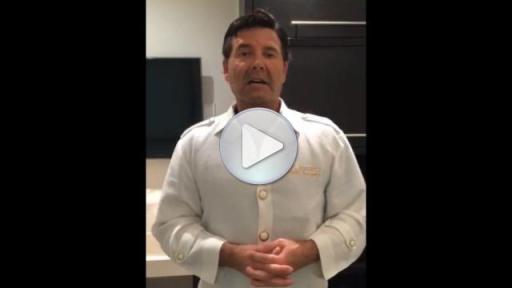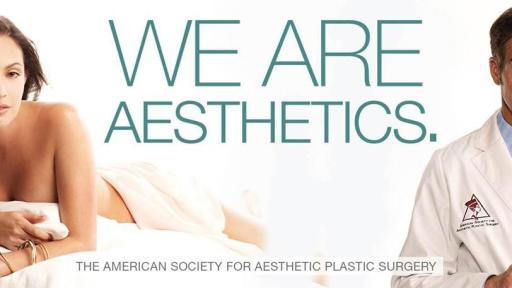Top-Tier Surgeons of the American Society for Aesthetic Plastic Surgery Discuss New Fat Grafting Techniques, Uses and Combined Procedures to Produce Natural Results
“Fat grafting is a relatively new way to literally sculpt the body and it is revolutionizing plastic surgery. Fat is the ‘liquid gold’ that enables us to reshape, change and augment patients’ body parts in ways diets, exercise and creams simply can’t. A patient’s own body tissue is used, so there is no chance of rejection,” explains ASAPS member, Dr. Constantino Mendieta. “Further, there is a lot of flexibility with using fat to contour the overall body shape because fat takes on the physiologic component of whatever it is adjacent to. If you inject fat near bone it takes on the characteristics of bone, and the same applies to muscle,” he states.
Fat is an artistic sculpting tool that can fill in defects, contour and reshape, whereas implants are used exclusively for augmentative purposes. Dr. Ashkan Ghavami, a fellow ASAPS member agrees but notes that fat grafting can actually complement implants, especially when a patient seeks a dramatic augmentation or enhanced cleavage, that fat or an implant alone cannot create. “The fat can help to create a natural look around the edges of the implants, or when replacing larger implants with smaller ones and the pocket size inevitably changes. It is a solid option for smoothing out and contouring the breast with implants, and should be tailored to the individual patient. It can also accompany a breast lift,” explains Ghavami.
When fat cells are removed from one area they are gone from that area forever, but can live indefinitely in whatever location they are transferred to. The fat retention rate varies from one body part to another averaging 40% in the breast, 60% in the buttock and 60% in the calf or legs according to panelists, when performed by an experienced plastic surgeon certified by the American Board of Plastic Surgery (ABPS).
“The concept of beauty today is about shape and proportion - not necessarily size. More patients are requesting to shift fat from one area to another to look prettier and perkier, but not necessarily larger. This includes men who have lost body fat in the derriere region when they’re typically in their 40s,” notes Dr. Mendieta. For patients who don’t have enough body fat to be grafted, Mendieta will recommend he/she gains anywhere from 10 to 15 pounds for extraction. He notes that patients who can’t gain weight are limited to implants.
Ghavami explains, “Fat grafting can be limited by multiple factors, including bone structure, the quality of the skin itself and how much a patient’s tissue can actually stretch. Additionally, too much fat in a particular area can cause it to rupture and explode the surrounding ligament borders, so there is no need for excessive large volume of body fat transfers in everyone. As with breast implants, the volume has to match each patient’s tissues. Patients also need to have realistic expectations of what can be achieved. Fat alone can’t perfectly smooth out cellulite (but can improve its appearance in some) as shown in widely-circulated photoshopped images in the media, nor can it increase a woman’s cup size by more than a letter or two at most,” he explains.
While it has its limitations, fat grafting holds significant promise for the future of aesthetic plastic surgery, as it is already changing the landscape by offering patients a natural option for subtle enhancement. If properly placed, fat can change the contour of the overall body, but results depend on the experience and expertise of a plastic surgeon certified by the American Board of Plastic Surgery (ABPS).
Moderator: Robert Singer, MD
Panelists: Daniel Del Vecchio, MD; Ashkan Ghavami, MD; Constantino Mendieta, MD
# # #
About ASAPS
The American Society for Aesthetic Plastic Surgery (ASAPS), is recognized as the world’s leading organization devoted entirely to aesthetic plastic surgery and cosmetic medicine of the face and body. ASAPS is comprised of over 2,600 Plastic Surgeons; Active Members are certified by the American Board of Plastic Surgery (USA) or by the Royal College of Physicians and Surgeons of Canada and have extensive training in the complete spectrum of surgical and non-surgical aesthetic procedures. International Active Members are certified by equivalent boards of their respective countries. All members worldwide adhere to a strict Code of Ethics and must meet stringent membership requirements.
Website: www.surgery.org
Follow ASAPS on Twitter: www.twitter.com/ASAPS
Become a fan of ASAPS on Facebook: www.facebook.com/AestheticSociety
Join Smart Beauty Guide: www.smartbeautyguide.com
Locate a plastic surgeon in your area: http://www.smartbeautyguide.com/select-surgeon
Media contacts: Leigh Hope Fountain (562) 799-2356 or Gloria Gasaatura (562) 799-2356
Email: [email protected] or [email protected]








